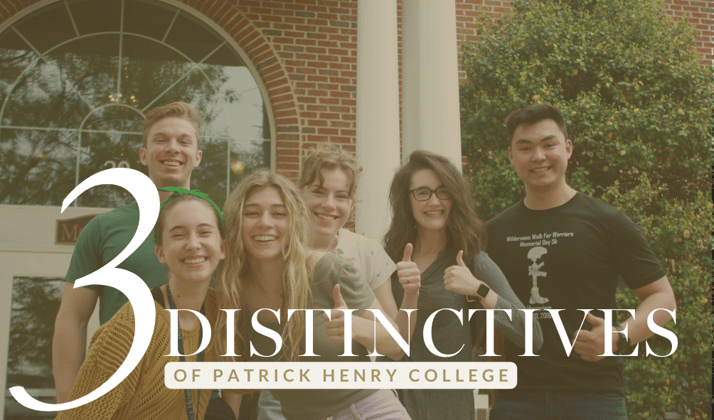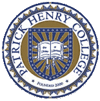.gif?width=714&height=599&name=NEW%20blog%20banner%20(55).gif)
What I call “hummingbird hall” on the second floor of the Barbara Hodel Center always intrigues me. Thirteen lithographs of hummingbirds hang on the walls leading to the admissions office. Glass plates next to them boast intricate nineteenth-century descriptions of exotic birds.
Maybe it’s the Florida woman in me, but every time I pass Selasphorus platycercus or Lophornis magnificus, the tropical hues and historic writings beg for attention. For a second, I want to stop what I’m doing and grant their wish.
But that would look awkward, I think. Maybe I’ll do it another day...yes, that’s a good idea. Another day. Perfectly satisfied with my decisiveness and ability to prioritize, I hurry on to my next class without missing a beat.
But one day, I decided to find out more about them and emailed Tom Ziemnick, Vice President of Advancement.
A donor from Texas (unnamed for privacy) called Ziemnick in 2010 and asked him if he would like some illustrations for the BHC. She and her husband had discovered original lithographs that had lain neglected in storage for their art studio.
“I asked what they were, and she said, ‘Hummingbirds!’ I was a little, as you can imagine, underwhelmed,” Ziemnick recalled. “They weren’t exactly what we were thinking of, but she was really excited about them, so we thought we’d give it a try.”
“When the crates arrived, I was kind of blown away,” he continued. “They are beautiful....When we took her [the donor] up there, she teared up and expressed her gratitude that she had finally found a home for them.”
 Unfortunately, the donor lost her life to cancer a few years ago. Ziemnick and President Jack Haye attended the funeral in 2022. But every time Ziemnick leads a tour, the group stands in awe, and in that sense, she lives on.
Unfortunately, the donor lost her life to cancer a few years ago. Ziemnick and President Jack Haye attended the funeral in 2022. But every time Ziemnick leads a tour, the group stands in awe, and in that sense, she lives on.
As I researched the British bird scientist credited with their printing, John Gould, I noticed a similar story of longevity amidst deep pain. Gould published the Monograph of the Trochilidae or Family of Humming Birds in the mid-1800s According to the Australian Museum, Gould’s wildly successful nature books were almost like a small family business. His entrepreneurial mind enabled him to publish his wife Elizabeth’s artwork and his own scientific commentary.
Together, they had traveled the world, marveling at the wonders of nature and sharing their awe with the world through their books. According to the Australian Museum, for example, “Gould collected 800 bird specimens, 70 quadrupeds and the nests and eggs of more than 70 species of birds and the skeletons of all the principal forms, making notes on them and their habitats [in Australia].” Elizabeth, even while pregnant, would prepare sketches for her husband.
The Goulds’ exotic life together ended in 1841, after Elizabeth died from the stress of childbirth. Gould could have stopped publishing illustrations to mourn. But he pressed on, hiring artist H.C. Richter to help with his next few works—one of which involved the hummingbirds.
The National History Art Gallery happily gives a detailed explanation of why Monograph of the Trochilidae or Family of Humming Birds is Gould’s masterpiece: “Depicted and lithographed on stone by artists John Gould, Henry Constantine Richter and William Matthew Hart, each plate exquisitely portrays these delicate, evocatively colored birds with the flowers indigenous to their area,” the website reads. “Strong botanical elements add a dimension not found in other bird folios while the use of gold leaf, transparent oil colors, watercolors, lacquers, and gum arabic are combined to capture the iridescent, jewel-like quality of birds.”
 But I doubt this artistic evaluation fully explains why our hummingbirds now warm and convict my heart when I walk by. Now, I know that each illustration stands as a subtle, poignant testament to perseverance through grief. Whether it’s in the loss of a donor through cancer or the death of Gould’s wife after childbearing, the darkest and loneliest of places can be the very ones that produce the most beauty—a beauty that prevails far beyond death.
But I doubt this artistic evaluation fully explains why our hummingbirds now warm and convict my heart when I walk by. Now, I know that each illustration stands as a subtle, poignant testament to perseverance through grief. Whether it’s in the loss of a donor through cancer or the death of Gould’s wife after childbearing, the darkest and loneliest of places can be the very ones that produce the most beauty—a beauty that prevails far beyond death.
--
Patrick Henry College exists to glorify God by challenging the status quo in higher education, lifting high both faith and reason within a rigorous academic environment; thereby preserving for posterity the ideals behind the "noble experiment in ordered liberty" that is the foundation of America.

.png?width=800&height=400&name=PHC%20(1).png)




